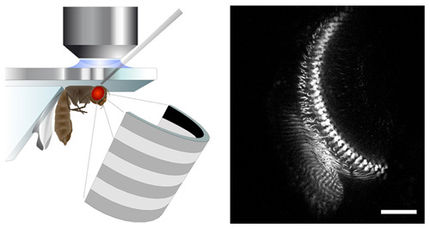Researchers chart flavor’s favored flow
The sweetness of a peppermint candy can be experienced with the nose pinched shut, but flavor is detectable only when the pinch is released and volatiles in the candy are exhaled back into the nose where smell receptors exist. Exactly how this happens was not known, but now a multi-disciplinary team at Yale University has built a 3-D model of the mechanisms that help bring flavor into our lives.
“The study appears to confirm that humans are especially adapted to enhance this form of smell, and reinforces the idea of the central role flavor plays in human diets,” said Gordon Shepherd, professor of neuroscience.
The collaboration involved flow dynamics researchers from engineering and imaging experts at the medical school, who created a scan of the throat, which in turn was used to create a 3D printout at the Yale Center for Engineering Innovation and Design.
Researchers said they were surprised to find that the dynamic flow patterns suggested that the oropharynx at the back of the mouth was shaped to allow particles to collect in a virtual cavity where they could be efficiently picked up by the exhaling flow, a process known as retronasal smell. In contrast, the flow lines during inhalation passed right by this cavity, thus minimizing the transport of particles into the lungs. This difference occurred even at the relatively low flow rates during normal breathing when we are eating.
The researchers speculated that these mechanisms allow us to immediately sense by retronasal smell — as well as touch and taste —whether to accept a substance in our mouth. In addition, inhalation of the volatiles into the lungs is minimized in case those volatiles provide a warning not to accept the food.
Original publication
Other news from the department science

Get the life science industry in your inbox
By submitting this form you agree that LUMITOS AG will send you the newsletter(s) selected above by email. Your data will not be passed on to third parties. Your data will be stored and processed in accordance with our data protection regulations. LUMITOS may contact you by email for the purpose of advertising or market and opinion surveys. You can revoke your consent at any time without giving reasons to LUMITOS AG, Ernst-Augustin-Str. 2, 12489 Berlin, Germany or by e-mail at revoke@lumitos.com with effect for the future. In addition, each email contains a link to unsubscribe from the corresponding newsletter.
Most read news
More news from our other portals
Last viewed contents
Aquapharm and Dundee University Sign Research Collaboration to find Marine Compounds to target Alzheimer’s
Category:Human_anatomy
Muscarinic_acetylcholine_receptor
Breakthrough model holds promise for treating Graves' disease - Animal model first to simulate eye complications of thyroid disorder
Young's_syndrome

TechPivot GmbH - Berlin, Germany
ThromboGenics Announces that Microplasmin Meets Primary Endpoint in Phase III Trial for Vitreomacular Adhesion - Highly significant trial result (p=0.003) demonstrates the potential of microplasmin in the treatment of retinal disease






















































